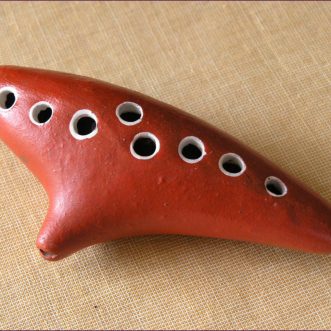
Design is for people
“You cannot understand good design if you do not understand people; design is made for people.” Dieter Rams ‘Design by Vitsoe’, 1976
The hard part is making sure we understand the people we’re designing for.
We can at least try.

“You cannot understand good design if you do not understand people; design is made for people.” Dieter Rams ‘Design by Vitsoe’, 1976
The hard part is making sure we understand the people we’re designing for.
We can at least try.

Money. A means of exchange, and a store of value.
As one, it oils the wheels of commerce, industry and everyday life. Enabling us not just to transfer value between each other, but to generate new value for each other.
As the other, it locks up not just its current value, but also all the potential value it is able to create.
Too much oil in the system can be wasteful, but not enough is catastrophic.
Hoarding is counter-productive. Money needs to move to be really useful, and the more parts it can reach, the more useful it will be.

We humans are good at compartmentalising.
We happily shop with a backpack or canvas bag ‘to save plastic’, then collect Disney hero cards or M&S shop miniatures with our groceries.
We install dual flush toilets ‘to save water’, then take 3 showers a day.
We cycle to work ‘to avoid polluting’, then fly abroad for a holiday 4 or 5 times a year.
Compartmentalising allows us to tinker, to make ourselves feel good, when what’s really needed is a paradigm shift.
Good luck to everyone on the Global Climate Strike today.

“Less, but better – because it concentrates on the essential aspects, and the products are not burdened with non-essentials. Back to purity, back to simplicity.” Dieter Rams, Design principle number 10.
Over-elaboration is something we humans like to do. To demonstrate the attention we’ve lavished on the thing we’re making and by extension on the person we’ve made it for, or to show off just how skilled we are. Or most likely, for both those reasons.
The trouble is the result is very often impractical – even unusable, and difficult to adapt when things change around it.
Keeping things simple is the hardest thing, because that means truly focusing on the other person, the one who has to use it or look after it.

The thing my mum hated most about her role in our family was that she was the one who nagged us. To tidy our rooms, do our homework or put our clothes in for washing.
Because, as all grown-ups know, getting things in good order doesn’t happen by accident. There is no ‘housework fairy’ that does it all by magic.
There isn’t a book-keeping fairy either. Although many small business owners seem to think there is. There’s only your poor accountant trying to drag the information out of you in time for the deadline, or ploughing through that jumbled bag of receipts you’ve handed in, trying to make sense of them for your tax return.
One of the best things my mum did for us was to go on strike. It helped us grow up and take responsibility for keeping our own order.
Perhaps its time accountants did the same. Because keeping your business in order is far more important than housework. It’s the foundation for growing up.

This man looks like the stereotypical accountant. Formal, old-fashioned, perhaps a bit uncomfortable with people.
Except he is actually one half of the first team to conquer Everest. Tenzing Norgay. Who partnered Edmund Hillary to achieve his dream.
If Mr Tenzing can look like an accountant, perhaps it’s time to revise your view of your accountant. Who knows, they may just be the partner you’ve been looking for to help you achieve your dreams.
There’ll certainly be more to him or her than meets the eye.
PS I’ll be giving a short talk on “How to get the most out of your business accountant” on the 26th September at the Metro Bank in Bexleyheath.
This is a breakfast networking event that runs from 8am to 9.30am and is free to attend.
To book your place, RSVP to jo*******@***********lc.uk

It’s impossible to predict every possible scenario. So instead of trying to plan for every eventuality, it’s much better to simply keep your options open.
The trick is to minimise the possible downside, while allowing the upside to take care of itself. So, if you can protect your restaurant from the worst effects of a storm, you can stay open, when others around you don’t. If everyone is evacuated (including you), you’re no worse off than if you had closed anyway. If they aren’t, you’re going to be popular.
This is what it means to be antifragile – the downside won’t kill you, while the upside benefits you significantly.
The beauty of this idea is that it makes dealing with risk much simpler. All you really need is to understand what might kill you, and mitigate the effects of that – creating a floor, below which nothing can go, while leaving the ceiling open to the sky.
You can do this with business processes too. Specify “the least that should happen”, and let humans beings find new ways to add the delight.
Then ratchet up the floor.

Those country lanes we love to drive down in summer were mostly built back in the 1920s and 1930s.
They were an investment in the future, both as physical infrastructure that opened up the countryside to new markets and as employment for men and their families who would have otherwise starved.
They have lasted much better than most canals and railways, because they are less prescriptive about what can travel on them, or for what purpose, which means they can cope with all kinds of traffic, from milk-cart, to ramblers to country commuters.
They form a network, combining direction and connection with flexibility. They enable autonomy.
Pretty good characteristics to aim for in a business infrastructure too. Expensive to build, but well worth the investment.

“It does not make a product appear more innovative, powerful or valuable than it really is. It does not attempt to manipulate the consumer with promises that cannot be kept.” Dieter Rams, design principle number 6.
Enough said.

“A product is bought to be used. It has to satisfy not only functional, but also psychological and aesthetic criteria. … Read More “Good design makes a product useful”